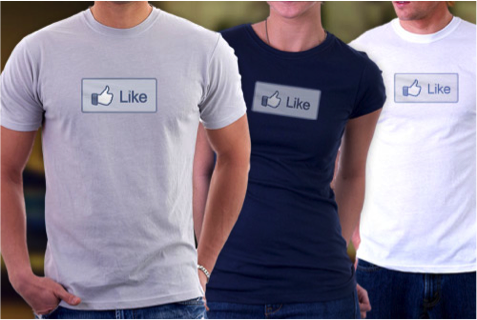Facebook Gestures: How Users Could Be Sharing Their Opinion
Facebook “Likes” have become a universal way to share or promote a piece of content on a blog or website (or Facebook itself). There are even T-shirts with the Like button printed on them. The Like button is now a recognizable symbol, and while it is used millions of times each day, the fact remains […]
Facebook “Likes” have become a universal way to share or promote a piece of content on a blog or website (or Facebook itself). There are even T-shirts with the Like button printed on them.
The Like button is now a recognizable symbol, and while it is used millions of times each day, the fact remains that the Like button cannot be used in every occasion.
Users need more variation in order to both adequately express how they feel about content posted on Facebook and why they are endorsing a specific product or piece of content via their Facebook profile.
For instance, multiple pages and groups are asking Facebook to add a “Dislike” button option (the biggest page has over 3.3 million fans, even though it is not updated).
Besides having the freedom to state a negative or positive opinion on Facebook, many users are hesitant to “like” a piece of content online in order to share it, as “liking” something implies they condone it.
For instance, if someone posts something horrific like an abuse story or an obituary, users are hesitant to “Like” or “thumbs up” that content, as nobody wants to “like” someone else’s death or tragedy.
However, they may want to share it with others, so the option to share a piece of content without having to say a person “likes” it may help increase exposure for all types of stories, not just ones that tend to be positive or garner likes (such as a humorous article about a dog who can water ski).
As mentioned in a previous Search Engine Land article on social rating, it is important to give people flexibility to share their true opinion, as not everything — especially when it comes to opinions on online news, products and content — can be answered with a simple yes or no, as the Boolean voting system requires. Options are crucial to allowing users to rate and share content more in accordance with how they really feel about it.
While promoting a piece of content by “liking” it may not be ideal in many users’ subconscious, because that is currently the only option available (since Facebook no longer supports the “share” action buttons as of February 2011), it is morally OK to hit “like” on content in order to share it.
Regular Facebook users and content readers understand that liking an external link doesn’t mean a person necessarily supports the actions of story, but instead wants to promote it or share it with friends via their Facebook profile.
Facebook most likely recognizes that only having the Like button as an option isn’t ideal, which is why it has been speculated they are going to release Facebook “Gestures,” which gives users choices on how they share and comment on internal and external content that is shared via the Facebook Like button. Users can show they “watched” or “read” a piece of content, instead of having to say that they “liked” it.
This is a crucial development in the social sharing space, as millions of websites and blogs are using the Like button to allow visitors to share content and products. As the online social experience continues to grow and evolve, users will continue to expect more intuitive and descriptive ways to share content, products and entertainment that is interesting or important to them.
While Facebook hasn’t announced “Gestures” yet as expected (as of press time), it is still a speculation that with the new navigational display changes and the upcoming Timeline profile layout, the way users will share content internally and externally via Facebook will have to change as well.
Stock image from Shutterstock, used under license.
Contributing authors are invited to create content for Search Engine Land and are chosen for their expertise and contribution to the search community. Our contributors work under the oversight of the editorial staff and contributions are checked for quality and relevance to our readers. The opinions they express are their own.
Related stories

